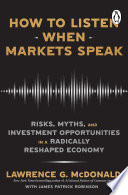

The core premise of the book is that markets communicate through various signals, and it's crucial for entrepreneurs and business leaders to learn how to interpret these signals effectively. The author emphasizes that market signals can come in many forms, including consumer behavior, sales data, social media trends, and economic indicators. By honing the ability to listen to these signals, businesses can make informed decisions that align with market demands. The book provides frameworks to analyze these signals and offers case studies that illustrate successful market listening strategies. It argues that a reactive approach to market changes can lead to missed opportunities, while a proactive listening strategy can position a company ahead of its competitors.
Continue readingData plays a pivotal role in understanding market signals. The book discusses various data sources, including quantitative data (sales figures, market share) and qualitative data (customer feedback, social media sentiment). The author advocates for a data-driven approach to market listening, where businesses leverage analytics tools to gather insights. This section details how to collect, analyze, and interpret data effectively, emphasizing the need for businesses to invest in data analytics capabilities. The book also highlights common pitfalls, such as over-reliance on outdated data or misinterpretation of data trends, which can lead to flawed business decisions.
Continue readingA significant portion of the book is dedicated to the importance of customer-centric listening. The author argues that understanding customer needs and preferences is fundamental to business success. Strategies for engaging with customers directly—through surveys, interviews, and feedback loops—are discussed. The book emphasizes the need for companies to create a culture of listening, where customer feedback is valued and acted upon. It also presents case studies of companies that have successfully implemented customer-centric strategies, showcasing the impact of listening to customer voices on product development and service enhancement.
Continue readingThe ability to adapt to market changes is crucial for long-term success. The author outlines the importance of agility in business operations, emphasizing that companies must be prepared to pivot in response to market signals. This section discusses frameworks for agility, including the concept of 'lean startups' and iterative development processes. The book provides examples of businesses that have successfully adapted to changing market conditions, illustrating the benefits of being responsive to market feedback. The author stresses that adaptability is not just about reacting to changes but also about anticipating them through effective market listening.
Continue readingThe book advocates for the establishment of a listening organization, where every level of the company is engaged in market listening. The author discusses the cultural shifts necessary to foster an environment where feedback is actively sought and valued. This involves training employees to listen and respond to market signals and empowering them to make decisions based on insights gained from market listening. The section includes practical steps for leaders to create a listening culture, such as regular training sessions, feedback mechanisms, and recognition programs for employees who exemplify listening behaviors.
Continue readingThe final key idea discusses the future of market listening in an increasingly digital and interconnected world. The author explores emerging technologies, such as artificial intelligence and machine learning, and their potential to enhance market listening capabilities. This section highlights how businesses can leverage these technologies to process vast amounts of data and gain deeper insights into market trends. The author also addresses ethical considerations in data usage and the importance of maintaining consumer trust while utilizing advanced technologies.
Continue readingThe culmination of effective market listening is strategic decision-making. The book emphasizes that the insights gained from listening to market signals should directly inform business strategies. The author outlines a decision-making framework that incorporates market insights, allowing leaders to make informed choices that align with consumer needs and market conditions. This section includes case studies of companies that have successfully integrated market listening into their strategic planning processes, demonstrating the tangible benefits of a data-informed approach to decision-making.
Continue reading